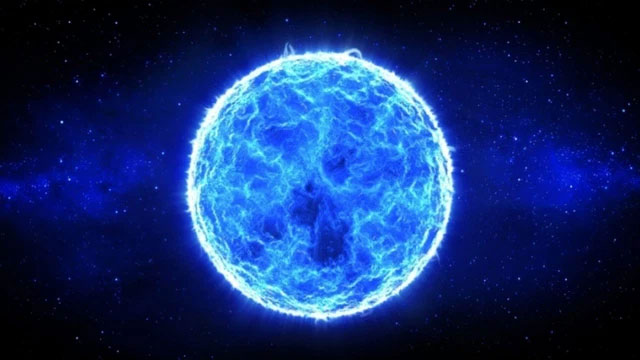Everything on the sunlit surface of the Earth would ignite; homes, roads, forests, rivers, and oceans would instantly evaporate, and the atmosphere would be swept away.
Some readers may not know much about Rigel, so it is necessary to provide a brief introduction.
Rigel is a star in the constellation Orion, scientifically named Beta Orionis. It is a blue supergiant—the brightest blue star in the sky. Its diameter is 77 times that of our Sun, and its brightness is 130,000 times greater than that of our Sun. It is located 893 light-years away from us and is the seventh brightest star in the sky.
But what would happen if our Sun were replaced by Rigel, even for just one second?

Rigel is the brightest star in the Orion constellation, the seventh brightest star in the night sky, and an extremely luminous blue supergiant, with an apparent magnitude of 0.18. Although it is designated “beta” by Bayer, Rigel is always brighter than Alpha Orionis. Ancient Chinese referred to it as the seventh star of Shen.
The radius of Rigel is over 50 million km, and if it were to take the place of the Sun, its surface would nearly touch the orbit of Mercury, causing Mercury to be swallowed instantly. The light from Rigel would reach Earth in just over 5 minutes instead of the 8 minutes it takes from our Sun.
With a luminosity 130,000 times that of our Sun, if this star were to replace the Sun for one second, the light reaching Earth would equate to absorbing energy equivalent to 36 hours of sunlight in just one second. It is almost certain that you would immediately become a fireball and evaporate rapidly.

Rigel is a variable star (its apparent brightness changes continuously) and is classified as an Alpha Cygni type star. Alpha Cygni is the representative name for a prototype type of star that exhibits variable brightness. The name Rigel comes from the Arabic phrase “Rijl Jauzah al Yusrā,” meaning “the left foot of Jauzah,” according to Richard Hinckley Allen’s book “Star Names: Their Lore and Meaning” (2013). This phrase is sometimes translated as “the left foot of the giant,” referring to the constellation Orion, of which Rigel is a part.
Everything on the sunlit surface of the Earth would ignite; homes, roads, forests, rivers, and oceans would instantly evaporate, and the atmosphere would be swept away.
However, if you were on the opposite side of the Earth and it was nighttime, perhaps everything would still be calm and not immediately affected.
The heat wave coming from the other side of the Earth would sweep across the globe in the coming hours, and the winds would be extremely strong. Most people who are asleep would be caught in the heat storm. Even if you were not burned to death, you would likely be crushed to death or suffocated by this storm, leaving no one on Earth, no animals or plants, able to survive.
The mass that the Earth loses would lead to disturbances in the movement of tectonic plates. There would be significant earthquakes and supervolcanoes all over our blue planet, and the entire surface of the Earth would undergo major changes.
If you happened to travel to Pluto during this time, you would certainly not recognize Earth as your home planet upon returning.
Rigel has been studied quite extensively through precise measurements using the parallax method: astronomers estimate the distance from Earth to Rigel to be between 700 and 900 light-years (210 and 280 parsecs), with data from the Hipparcos satellite providing the “most reliable” value of 773 light-years (237 parsecs), with a margin of error of about 19%.
Rigel is the brightest star in the vicinity of the Sun; the nearest star that is brighter than it is Naos, located 1,100 light-years away in the constellation Carina. Rigel is incredibly bright at a distance of 1 astronomical unit, making it an unimaginably luminous sphere.
The flux density is 100 MW/m2 or 10 kW/cm2, while that of the Sun is 1.4 kW/m2. The flux density at this distance is equivalent to the flux from a welding rod at a distance of just a few millimeters; anything located close to the star at this distance would evaporate and be blown away by the extremely strong stellar winds.
With its brightness and movement in the nebula region, Rigel illuminates several dust clouds in its general vicinity, the most notable being IC 2118 (the Witch Head Nebula).
Rigel is also associated with the Orion Nebula, although the distance from Earth to the nebula is twice that to Rigel, the two celestial bodies appear quite close together in the Orion constellation when viewed from Earth. Despite this difference in distance, Rigel’s future orbital motion in space may bring it closer to the nebula as seen from Earth. Thus, Rigel can be classified as an outer member of the Orion OB1 Association, along with many other bright celestial bodies in the sky; more specifically, it is a member of the Taurus-Orion R1 Association, with the OB1 group consisting of stars located near the nebula and formed relatively recently.


















































